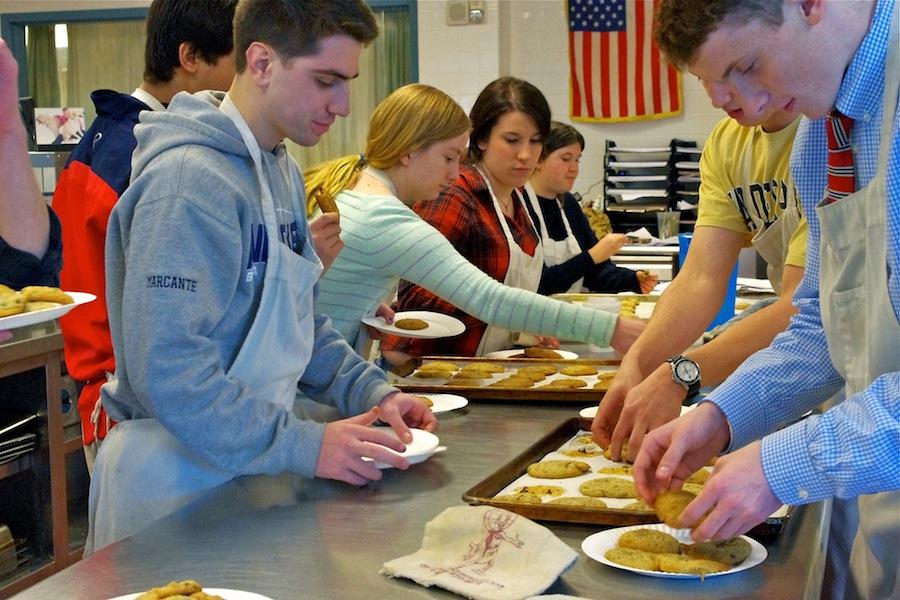Culinary Connections class uses cooking to ignite teamwork
Photo from the Inklings Archives
Culinary students bake cookies during class, just as Gans’ Connections group does.
It’s a coffee culture: crowding around the rectangular table, sipping freshly made hot coffee and tea, as they share their thoughts and feelings, a group of seniors has bonded together. All from different backgrounds, long-lasting friendships have been made in culinary teacher Cecily Gans’ Connections class.
Every Tuesday and Thursday, Gans’ Connections class comes together while making sweet and savory treats to encourage students to bond and take a step back from the senior year stressors.
Gans often refers to the class as a coffee culture, so the first project was of course, teaching the students how to make coffee; however, the students have cooked everything from omelets to crepes to cinnamon buns and various cookies.
“I typically have coffee and tea and that kind of stuff available so we can all feel really a certain level of comfort in the classroom. But cooking together always brings groups together,” Gans said.
Although not every class includes a cooking activity, through incorporating these fun and creative ideas, the students say they are able to breathe and take a break from college stressors. .
“It’s really hard when a lot of them are just finding out about colleges. Some of them haven’t [and] some of them have,” Gans said. “There’s such a wide range [of student personalities] it’s like the social constructs.”
At the start of the year, some senior students have been skeptical about how helpful and relevant the Connections class would be; however, many have found that, by cooking, Connections has felt more like a break in the day, rather than a dreadful class of forceful bonding.
“[By] incorporating activities and things that students can do while they discuss is important because otherwise, Connections feels like just another class,” Karalyn Hood ’20 said. “Sometimes to have progressive conversation you need to have an unconventional learning environment.”
In Connections, individuals are not allowed to do work for other classes, so through interactive activities like cooking, Gans is able to engage all her students while keeping it a meaningful class. Cooking has also helped Hood to enjoy the laid-back environment and feel more comfortable with the new group.
“I think having that kind of freedom has made us more comfortable speaking our minds when we have group discussions about the weekly topic,” Hood said. “We don’t cook every time, but when we do, it’s helped us to come together and bond as we all scramble to get everything together in only 20 minutes.”
Baking and cooking can be quite a process, so Gans always ensures they will have enough time to complete their project. For example, when the group made omelets, they chopped the vegetables up on Tuesday, so that by Thursday, all that had to be done was cook and assemble the piece. Gans and the seniors will often scramble and work together to ensure the food is done by the end of the period.
Gans has been able to showcase the talents of her students’ partnership, and also make the community welcoming and inclusive for all students, despite the fact that many were not friends prior.
“They don’t all hang out together. They’re not a clique but in my class, it’s kinda like watching ‘The Breakfast Club,’” Gans said. “You put a bunch of people together and cooking becomes what brings everybody together.”


















































